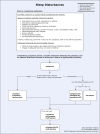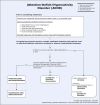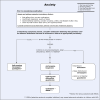Pharmacological treatment in autism: a proposal for guidelines on common co-occurring psychiatric symptoms
- PMID: 39773705
- PMCID: PMC11705908
- DOI: 10.1186/s12916-024-03814-0
Pharmacological treatment in autism: a proposal for guidelines on common co-occurring psychiatric symptoms
Abstract
Background: The prevalence of autism spectrum disorder (ASD) has surged, with an estimated 1 in 36 eight-year-olds in the United States meeting criteria for ASD in 2020. Autistic individuals face elevated rates of co-occurring medical, psychiatric, and behavioral conditions compared to non-autistic individuals. The rising ASD-patient demand is increasingly outpacing the capacity of ASD-specialty clinics, resulting in urgent need for autism-competent providers in general practice settings. This work aims to empower healthcare providers, especially primary care providers (PCPs), with guidelines for the recognition and safe pharmacologic management of common co-occurring psychiatric and behavioral conditions in ASD.
Methods: Lurie Center for Autism medical providers, who have extensive experience in ASD care, delineated approaches for recognition and pharmacological treatment of sleep disturbances, attention-deficit/hyperactivity disorder (ADHD), anxiety, depression, and irritability tailored to ASD patients. Pharmacological guidelines were iteratively refined until consensus was reached. Treatment differences relative to standard of care (SOC) of non-autistic individuals are noted. Key literature and clinical trial results were reviewed to supplement clinical experience.
Results: The pharmacological treatment pathways reflect how appropriate medication options for ASD patients can depend on many factors unique to the patient and can differ from established non-autistic SOC. Key takeaways include: For sleep disturbances in ASD, initial strategies align with non-autistic SOC, emphasizing sleep hygiene and melatonin use. First-line recommendations for treating ADHD, anxiety, and depression in ASD differ from non-autistic SOC; α2-adrenergic agonists are more suitable than stimulants for some ASD-ADHD patients, buspirone and mirtazapine are preferred to selective serotonin reuptake inhibitors (SSRIs) for anxiety, and duloxetine, mirtazapine, bupropion, and vortioxetine are recommended ahead of SSRIs for depression. Addressing irritability in ASD requires interdisciplinary evaluation of contributing factors, and guanfacine, risperidone, or aripiprazole may be appropriate, depending on severity.
Conclusions: Recognition and treatment of co-occurring psychiatric and behavioral conditions in autistic patients must account for differences in clinical presentation and medication effectiveness and tolerability. Drawing on evidence-based clinical insights, these guidelines seek to support PCPs in making informed decisions when prescribing medications for ASD patients with co-occurring psychiatric and behavioral conditions, ultimately enhancing access to timely, comprehensive care for all individuals with ASD.
Keywords: ADHD; Anxiety; Autism; Autism-competent care; Depression; Guidelines; Irritability; Primary care; Psychopharmacology; Sleep.
© 2025. The Author(s).
Conflict of interest statement
Declarations. Ethics approval and consent to participate: Not applicable. Consent for publication: Not applicable. Competing interests: MAM, KBB, JB, NDBF, AMN, MLP, RPT, ES, HB, KD have no competing interests. CJK: Biogen/Ionis Pharmaceuticals scientific advisory board member. JMH: Massachusetts Institute of Technology Consultant; American Chemical Society (ACS), ACS Publications, ACS Chemical Neuroscience Editorial Role; Eikonizo Therapeutics Co-Founder, Advisor; Sensorium Therapeutics Co-Founder, Advisor; Psy Therapeutics Consultant; Delix Therapeutics Advisor; Fuzionaire Diagnostics Advisor; Arclight Therapeutics Advisor; Proximity Therapeutics Advisor; Human Health Advisor, Rocket Science Health Advisor; Atai Life Sciences Sponsored research, training grant/gift. CJM: Acadia Pharmaceuticals consultant; Oxford University Press royalties; Springer Publishing royalties.
Figures





References
-
- Maenner MJ, Warren Z, Williams AR, Amoakohene E, Bakian AV, Bilder DA, et al. Prevalence and characteristics of Autism spectrum disorder among children aged 8 years - Autism and Developmental Disabilities Monitoring network, 11 sites, United States, 2020. MMWR Surveill Summ. 2023;72(2):1–14. - PMC - PubMed
Publication types
MeSH terms
LinkOut - more resources
Full Text Sources
Medical

